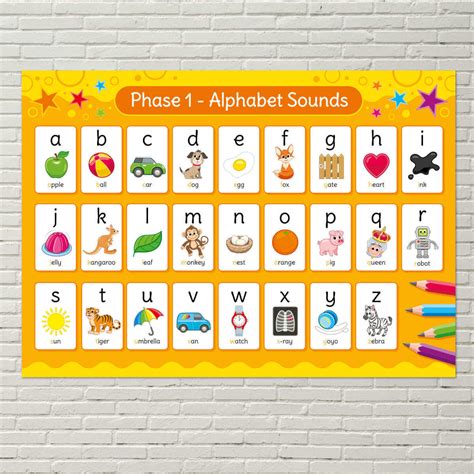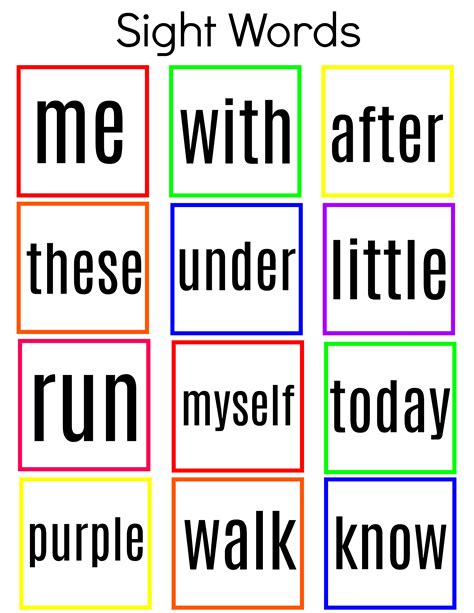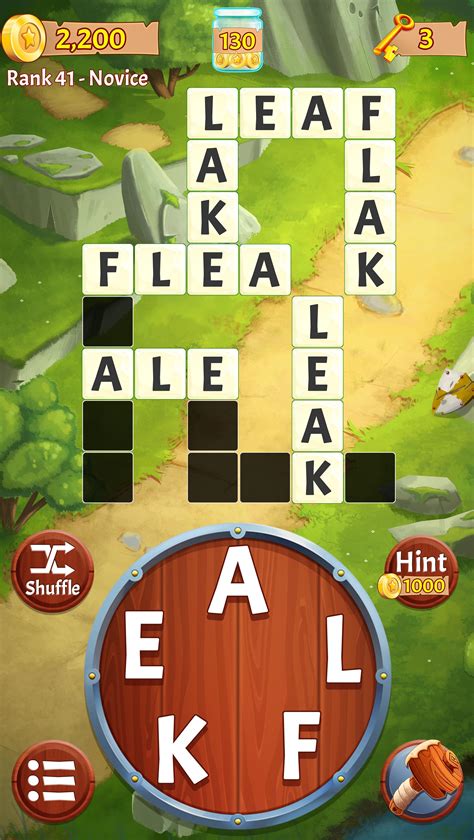Unlock Joyful Learning Mastering the Art of Positive Reading Instruction for Kids
Contributor by : Mary Newman
Unlock Joyful Learning Mastering the Art of Positive Reading Instruction for Kids, Nurture young minds with effective reading techniques. Discover joy in learning as we guide you through the art of teaching reading to children.
another post may you read : Unlocking Brilliance: The Transformative Power of Reading Aloud to Kids ???
Unlock Joyful Learning: Mastering the Art of Positive Reading Instruction for Kids!
Nurture young minds with effective reading techniques. Discover joy in learning as we guide you through the art of teaching reading to children.
Embarking on the journey of teaching reading to children is a rewarding endeavor that lays the foundation for a lifetime of learning. In this enlightening exploration, we delve into proven strategies that not only captivate young minds but also instill a love for literacy. Picture a world where every child is empowered with the ability to unlock the magic of words, and let us guide you through the transformative process. With a focus on innovative techniques and a passion for fostering a positive reading environment, our approach ensures that young learners not only master the art of reading but also embark on an exciting adventure of discovery. So, let’s embark together on this literary odyssey, where each turn of the page brings us closer to nurturing a generation of confident and avid readers.
1. Introduce Phonics: Start with basic phonics to help children grasp the fundamental sound-letter relationships.
2. Interactive Storytime: Engage children in interactive storytelling sessions to make reading enjoyable.
3. Sight Words Mastery: Build a strong foundation by focusing on high-frequency sight words for quick recognition.
4. Fun with Rhymes: Explore rhyming words through playful activities, making learning entertaining.
5. Reading Aloud: Encourage reading aloud to enhance fluency and boost confidence in pronunciation.
6. Word Games: Incorporate word games that make learning to read a delightful and educational experience.
7. Personalized Libraries: Create personalized reading spaces with age-appropriate books for exploration.
8. Technology Integration: Utilize interactive apps and online resources to supplement traditional teaching methods.
9. Positive Reinforcement: Motivate and reward children for their reading achievements to foster a positive attitude.
10. Patience and Encouragement: Cultivate a patient and encouraging atmosphere to support each child’s unique learning journey.
Unlocking the World of Reading for Kids
The Joy of Phonics
Lets kick off our reading adventure with the magic of phonics! Phonics introduces kids to the relationship between letters and sounds. It’s like giving them a secret code to decode words. Just as each puzzle piece fits snugly into place, phonics lays the foundation for reading success. Image: 
Embark on Storytime Adventures
Imagine a world where stories come alive! Make reading an interactive experience by diving into captivating tales. Engage children in storytime adventures, complete with animated expressions and character voices. This not only enhances their comprehension but also sparks a love for storytelling. Image: 
Mastering Sight Words
Lets focus on the rock stars of reading sight words! These high-frequency words are the building blocks of sentences. By mastering them, kids gain confidence and speed in recognizing words at a glance. Create flashcards or play games to make sight word mastery a playful journey. Image: 
Rhymes for Fun and Learning
Get ready for rhyme time! Exploring rhyming words is not only fun but also an excellent way to boost phonemic awareness. Create a playful environment with rhyming games and activities. Watch as children giggle and learn, effortlessly connecting words that sound alike. Image: 
Reading Aloud: A Shared Experience
Picture this: cozy moments with a book, shared laughter, and the joy of reading aloud. Reading together not only strengthens the parent-child bond but also enhances fluency. Children absorb pronunciation, intonation, and storytelling skills as they listen and follow along. Image: 
Word Games for Learning Delight
Learning through play is the name of the game! Incorporate word games into your reading lessons. Whether its a classic game of Scrabble or a word-building puzzle, these activities make the learning process enjoyable and engaging. Image: 
Creating Personalized Reading Nooks
Transform reading into a magical journey by creating personalized reading nooks. Design cozy corners filled with age-appropriate books, comfy cushions, and soft lighting. Let children explore and pick their own books, fostering a sense of ownership and excitement about reading. Image: 
Embracing Technology in Learning
Technology meets tradition in the world of reading. Integrate interactive apps and online resources to add a tech-savvy twist to your lessons. Educational apps can reinforce concepts, offer interactive stories, and provide a dynamic way for kids to engage with the world of words. Image: 
Patience and Encouragement
Last but certainly not least, lets talk about the power of patience and encouragement. Every child learns at their own pace, so be patient and celebrate small victories. Encourage their efforts, and watch as they blossom into confident readers. It’s not just about teaching reading; it’s about nurturing a lifelong love for learning. Image: 
Embark on this reading journey with enthusiasm, creativity, and a sprinkle of joy. Together, let’s open the doors to a world where children not only learn to read but fall in love with the magic that words bring to their lives.
Embarking on the Reading Adventure with Kids
Teaching reading to children is a journey filled with excitement, discovery, and the joy of witnessing young minds unlock the magical world of words. As parents, educators, or mentors, we play a crucial role in shaping their reading abilities and fostering a lifelong love for learning. So, how do we embark on this adventure and make the process enjoyable for both children and ourselves?
The Foundation: Understanding Phonics
At the heart of teaching children to read lies the fundamental concept of phonics. Phonics involves teaching the relationship between letters and their corresponding sounds. It’s like giving kids a decoder ring for the English language. Start by introducing them to the basic sounds of each letter. Use interactive methods like flashcards, games, and rhymes to make phonics engaging and memorable. This sets the stage for decoding words and building a strong foundation for reading success.
Immersive Storytelling: Bringing Books to Life
Once the groundwork with phonics is laid, dive into the enchanting world of stories. Reading isnt just about decoding words; its about understanding and enjoying the narrative. Create a habit of immersive storytelling, where you read to your child with animated expressions and different voices for characters. This not only enhances their comprehension skills but also sparks a genuine love for books. As you embark on these storytime adventures, youre not just teaching reading; you’re instilling a passion for stories.
The Power of Sight Words: Building Blocks of Reading
As your young reader progresses, focus on the power of sight words. These are high-frequency words that appear frequently in texts. By mastering sight words, children can quickly recognize and understand common words, boosting their reading fluency. Create flashcards or play games to make learning sight words fun and interactive. The goal is to make these words instantly recognizable, like familiar landmarks in the reading landscape.
Rhyming Fun: Developing Phonemic Awareness
Engage in playful activities centered around rhyming words. Rhyming is not only enjoyable but also an effective way to develop phonemic awareness. This means being able to identify and manipulate the individual sounds (or phonemes) in words. Play rhyming games, sing rhyming songs, and encourage your child to come up with their own rhymes. Its a delightful way to enhance their sensitivity to the sounds of language.
Reading Aloud: A Shared Experience
Transitioning from learning individual sounds to reading sentences fluently is a significant step. Reading aloud together is a powerful way to achieve this. Choose books that match your childs reading level and take turns reading paragraphs or pages. This shared experience not only improves their fluency but also provides an opportunity for discussion. Ask questions about the story, characters, and predictions, encouraging critical thinking skills.
Word Games for Learning Delight
Learning doesnt have to be all serious incorporate word games into your teaching toolkit. Traditional games like Scrabble, Boggle, or crossword puzzles can be adapted to suit a childs level. These games not only reinforce reading skills but also add an element of fun and competition. The key is to make learning feel like play, fostering a positive association with reading.
Creating Personalized Reading Spaces
Make reading a special and personal experience by creating a dedicated reading nook. Set up a cozy corner with comfortable seating, good lighting, and a selection of age-appropriate books. Encourage your child to pick books that interest them. Having a personalized reading space fosters a sense of ownership and makes the reading process more enjoyable. It’s a small investment that can yield significant returns in terms of a childs engagement with reading.
Embracing Technology in Learning
Technology is a powerful tool that can complement traditional teaching methods. Explore educational apps and online resources designed to enhance reading skills. These resources often incorporate interactive elements, games, and multimedia to make learning engaging. Introduce your child to e-books and audiobooks, providing them with different formats to experience stories. The key is to strike a balance between screen time and traditional reading methods.
The Role of Patience and Encouragement
Teaching reading to children requires a healthy dose of patience and encouragement. Every child learns at their own pace, and its essential to celebrate small victories along the way. Avoid putting undue pressure on your child, and instead, focus on creating a positive learning environment. Encouragement can come in the form of praise for effort, rewards for achievements, and simply expressing enthusiasm for their reading journey. Remember, its not just about teaching them to read; its about nurturing a love for learning that will last a lifetime.
Conclusion: Nurturing a Lifelong Love for Reading
As we navigate the terrain of teaching reading to children, lets keep in mind that it’s more than a skill to be acquired its a journey to be enjoyed. By incorporating phonics, storytelling, sight words, rhyming activities, and interactive games, we can create a rich learning experience. Reading aloud together, establishing personalized reading spaces, and embracing technology add layers of depth to the process.
Patience and encouragement act as guiding lights, ensuring that each child develops their reading abilities in a supportive and positive atmosphere. So, lets embark on this reading adventure with enthusiasm, creativity, and a whole lot of joy. Together, we can unlock the world of reading for children, laying the foundation for a future where they not only read with proficiency but also cherish the magic that words bring to their lives.
1. **Understanding the Basics:** Teaching reading to children is not merely about flipping pages; its about laying a strong foundation. Begin with the basics, introducing them to the alphabet and the sounds each letter makes.
2. **Phonics as the Building Blocks:** Emphasize the importance of phonics, as it serves as the building blocks for reading. The ability to connect letters with their corresponding sounds is a fundamental skill that paves the way for decoding words.
3. **Storytime as an Art Form:** Transforming reading into an art form, engage children in interactive storytelling sessions. This not only enhances their comprehension skills but also ignites a passion for narratives that goes beyond the words on the page.
4. **Mastering Sight Words:** Elevate their reading prowess by focusing on high-frequency sight words. These words, encountered frequently in texts, become the stepping stones towards fluid reading, enhancing both speed and comprehension.
5. **Rhyming for Phonemic Awareness:** Rhyming activities serve as more than just playful exercises. They contribute to the development of phonemic awareness, sharpening a childs ability to recognize and manipulate the individual sounds in words.
6. **Reading Aloud for Fluency:** Reading aloud is not just a shared activity; its a strategic move to enhance fluency. It allows children to absorb pronunciation, intonation, and storytelling skills, ultimately leading to more confident readers.
7. **Fun with Word Games:** Learning is most effective when its enjoyable. Integrate word games into the teaching process to make it fun and engaging. Games like Scrabble or word puzzles can turn the learning curve into a playful adventure.
8. **Creating Reading Havens:** Establish personalized reading spaces that cater to a childs preferences. Cozy corners filled with age-appropriate books and comfortable seating contribute to a reading haven, fostering a sense of ownership and enjoyment.
9. **Tech Integration for a Modern Touch:** Embrace technology as a supplementary tool. Educational apps and online resources can add a modern twist to traditional teaching methods, providing interactive experiences that resonate with tech-savvy young minds.
10. **Patience and Positive Reinforcement:** Above all, the journey requires patience and positive reinforcement. Every child progresses at their own pace, and acknowledging their efforts, no matter how small, is crucial. A positive learning environment lays the groundwork for a lifelong love of reading.
Teaching reading to children is a multifaceted endeavor, combining pedagogical strategies with a touch of creativity. By embracing these principles, educators and parents alike can contribute to the development of confident, proficient readers.
In wrapping up our journey on how to teach reading to children, it’s crucial to recognize the profound impact that effective reading instruction can have on a child’s future. As parents, guardians, or educators, we hold the key to unlocking the world of words for the next generation. Teaching reading is not just a skill; it’s a gift we give to our children, opening doors to knowledge, creativity, and a lifelong love for learning.
Remember, the path to literacy is a gradual one, marked by small victories and moments of discovery. Patience is the cornerstone of successful teaching, allowing children to progress at their own pace and build a solid foundation for future academic success. As you embark on this reading adventure, celebrate the joy of each milestone and the curiosity that blooms with every turned page. Recognize the power of encouragement and positive reinforcement in shaping not only proficient readers but also enthusiastic learners.
So, to all the educators, parents, and caregivers out there, thank you for investing in the future of our children. Your commitment to teaching reading goes beyond the classroom or living room; it’s a lifelong investment in their growth, development, and the countless stories yet to be explored. As we nurture the love for reading, we sow the seeds for a brighter, more imaginative tomorrow.
Q & A about Unlock Joyful Learning: Mastering the Art of Positive Reading Instruction for Kids! :
Q: How can I make reading enjoyable for my child?
1. **Answer:** Engage your child in interactive storytelling sessions. Add animated expressions, use different voices for characters, and make the experience memorable. Creating a positive and enjoyable atmosphere around reading sets the stage for a lifelong love of books.
Q: What role does technology play in teaching reading to children?
2. **Answer:** Technology can be a valuable ally in teaching reading. Educational apps and online resources offer interactive experiences that complement traditional methods. Integrate tech in moderation, ensuring a balanced approach that combines the benefits of both digital and traditional learning.
Q: How do I address my child’s unique learning pace?
3. **Answer:** Every child learns at their own pace. Patience is key. Tailor your teaching approach to match your child’s individual needs and celebrate their progress, no matter how small. A supportive and understanding environment fosters confidence and a positive attitude towards learning.
Q: Are there specific games that can help with reading skills?
4. **Answer:** Yes, incorporate word games into your teaching toolkit. Classic games like Scrabble, Boggle, or word puzzles can make learning fun. These games not only reinforce reading skills but also add an element of play, turning the learning process into an enjoyable adventure.
Q: How can I encourage my child to read independently?
5. **Answer:** Create personalized reading spaces with age-appropriate books. Allow your child to choose their reading materials, fostering a sense of ownership. By establishing a cozy reading nook, you provide a comfortable environment that encourages independent exploration and a love for reading.
Remember, each child is unique, and there’s no one-size-fits-all approach. Tailor your strategies to suit your child’s personality and interests, and above all, make the journey of learning to read a delightful and cherished experience.
Keywords : Teaching Reading, Phonics, Storytelling, Sight Words, Patience and Encouragement









